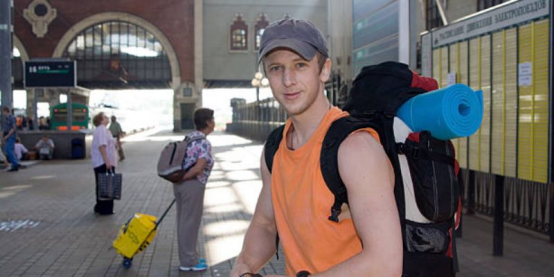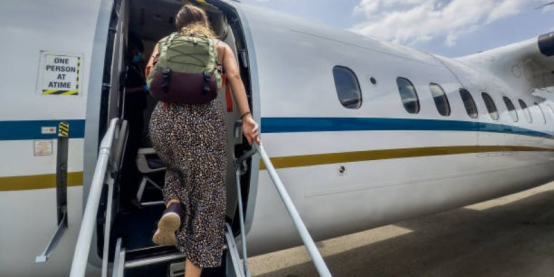How To Plan a Multi-Country Backpacking Trip
When I originally dreamed of backpacking across multiple countries, it came with its fair share of excitement and heavy overwhelm. The thought of immersing yourself in new cultures, sampling exotic foods, and meeting folks around the globe was intoxicating — but what's the first step? After months of research, trying things out and making mistakes, I've realized that a multi-country trip is less about booking flights and packing a bag. It's about creating a journey that's safe, affordable and unforgettable. Here's what I did, step by step.
Pick Your Places: A Map And A Dream
It started with me asking: What do I want from this trip? Maybe you're into sprawling cities, mellow mountains, or oceanfront villages. I wanted a mix of history, nature, and native fare. I took out a map and circled areas that sparked my interest—Southeast Asia for the colourful street food, Europe for the medieval cities, and South America for the hiking.

However, dreaming is only the beginning. I soon realized I had to focus it more. Things like time, money and travel experience are essential. I chose three nearby nations to complicate logistics as little as possible. Brokering proximity spared them long travel days and dear transport costs. And, like visa requirements, it averted paperwork migraines.
The Research Is Your Best Friend: Know Before You Go
I researched each destination for hours before booking anything. I read blogs, watched travel vlogs and signed up for online forums to learn from others’ experiences. Key questions I asked:
Are there any entry restrictions, such as visas or shots?
When is the best time to visit? (Monsoon season in Nepal, kidding around summer in Spain.)
Are there safety risks I need to be aware of?
I also researched local customs. In some places, it’s essential to dress modestly, and others have specific regulations about photography near places of worship. Having this information upfront enabled me to steer clear of embarrassing blunders.
Living On a Budget: How I Made Just Enough Money Go a Long Way
It all comes down to money, which can make or break a trip. I began by estimating how much it would cost daily for accommodation, food, transport, and activities. We paid $15-$30 per night for hostels, $3-$5 for street food meals, and $10-$50 for trains between cities. I included a 10% buffer for contingencies.
I focused on free activities such as hiking or visiting local markets to save money. I also booked flights when travel slowed down and used apps such as Skyscanner to monitor when prices dropped. For more extended stays, I explored work exchange programs—a week's worth of volunteer work on a farm in Italy got me free lodging.
How a Flexible Itinerary Makes For Better Adventures
I made the mistake of scheduling hour by hour early on. By the third day, I was falling apart. Now, I plan a loose outline. For example:
Week 1: Thailand (Bangkok, Chiang Mai)
Week 2: Vietnam (Hanoi, Ha Long Bay)
Week 3: Cambodia (Siem Reap, Phnom Penh)
I leave room for spontaneity—a local's tip about a hidden waterfall or an invite to a festival. I adjust my route using apps like Google Maps and Rome2rio.

Transportation Tricks: A To B (And To C And D)
Transporting things across borders can be tricky. In Europe, trains and buses are very dependable, whereas in Southeast Asia, overnight buses have helped me spend less time in transit and save money on hotels. I learned to reserve tickets ahead of time on popular routes, such as the train from Paris to Amsterdam, to avoid sold-out seats.
Watch out for hidden expenses with budget airlines for flights — always check baggage allowance. I have digital and hard copies of my passport, visa, and itinerary when crossing borders. A lamination machine was my best friend for document preservation.
Pack Like a Pro: Always Pack Less
My first trip was boiled down to my regret of overpacking. These days, I travel with a carry-on-size backpack. Essentials include:
Clothing that drys quickly (zero ironing required!)
A universal power adapter
Portable water filter and reusable water bottle
A first-aid kit with band-aids and motion sickness pills
I also bring a “just in case” bag for souvenirs or extra layers. However, a pro tip for getting the most out of your packing is to roll, not fold, clothing — it helps save space and minimizes wrinkles.
Travel Safely: Advice From a Solo Traveler
I became safety-conscious after I got lost in a not-so-good part of Mexico City. I now send my itinerary to family and check in throughout the day. I also:
Don't walk at night alone in unknown places.
Hide passports and cash in a money belt.
Pick up some basic phrases in the local language (“Help,” “Police,” “Thank you”).
Travel insurance is a must. Two years ago, I required urgent dental work in Costa Rica — my insurance covered the bill and saved me thousands.
Shared Accommodations: The Essence Of Backpacking
You never know when the best memories will happen through spontaneity. I've eaten with my host families, learned their traditional dances and even been invited to weddings. How? I started conversations. A simple "Can you recommend a good restaurant? Sometimes, becoming more serious relationships.
Language barriers? Google Translate is my hero. I also keep a small notebook to record phrases or make drawings when the words fail me.

The Best-Laid Plans: Why You Should Embrace The Journey
I ditched my itinerary to hike the Salkantay Trail instead of the popular Inca Trail in Peru. It wound up being the highlight of my trip. Flexibility taught me to welcome detours — missing a bus became a sunrise paddleboarding experience in Bali, a cancelled hostel booking, and lifelong friends.
Travel is not a box-checking exercise. It's about the stories you pick up and the person you become on the journey.
Next Steps For Your Adventure
Ready to start planning? Open a notebook and write down three countries you want to visit. Research entry requirements, create a rough budget, and follow your curiosity. The world is a prominent place, but with patience and preparation, you'll navigate it like a pro.